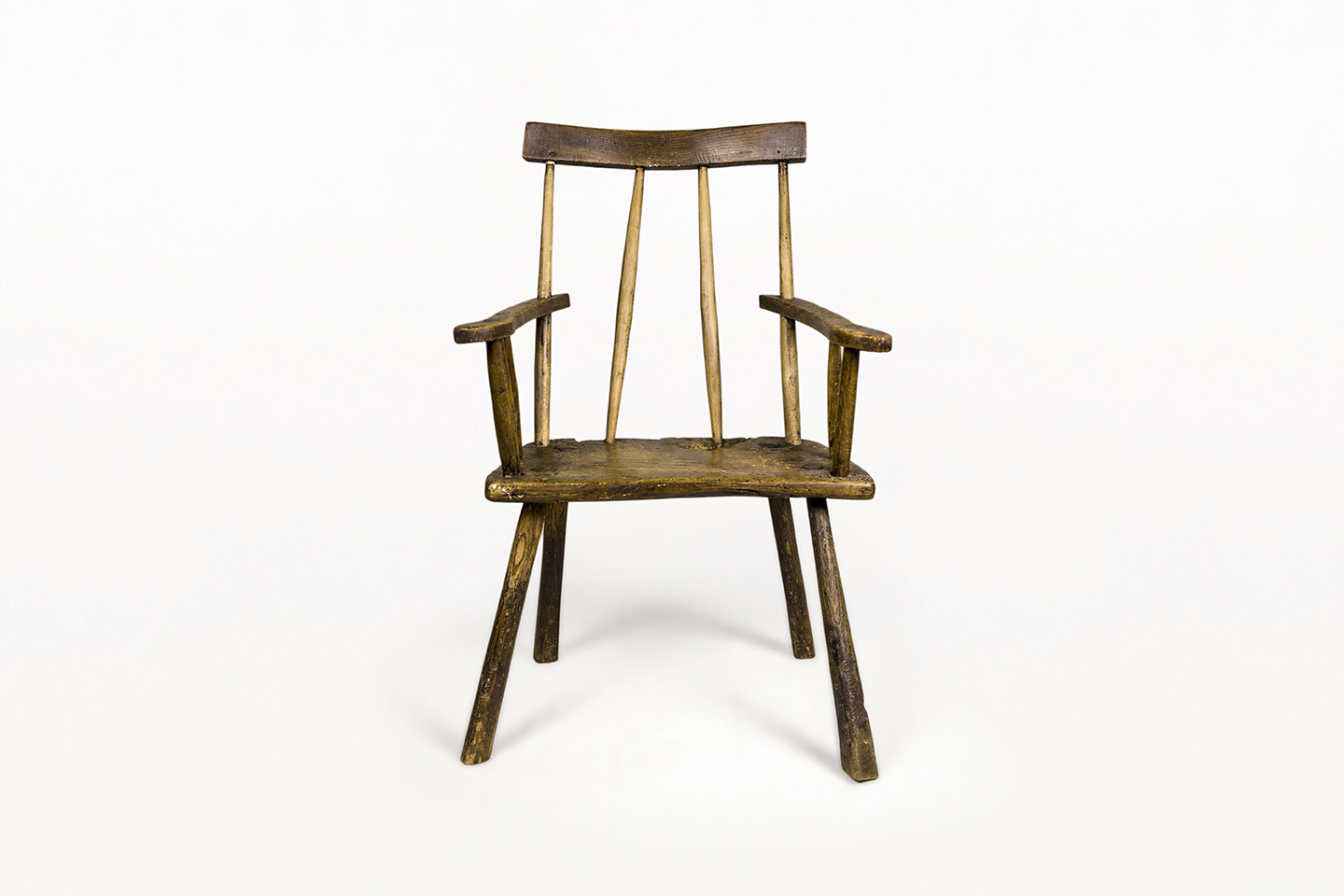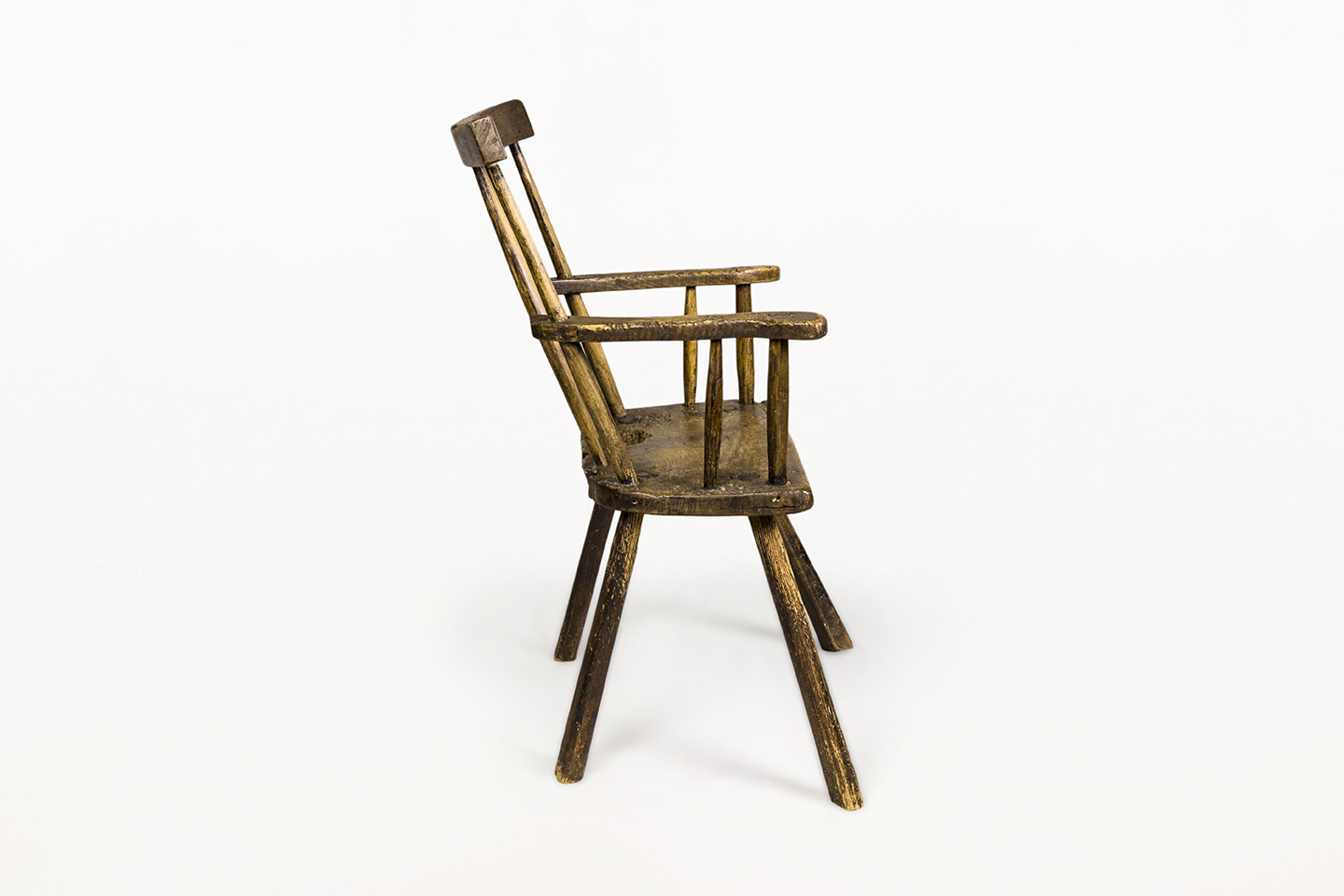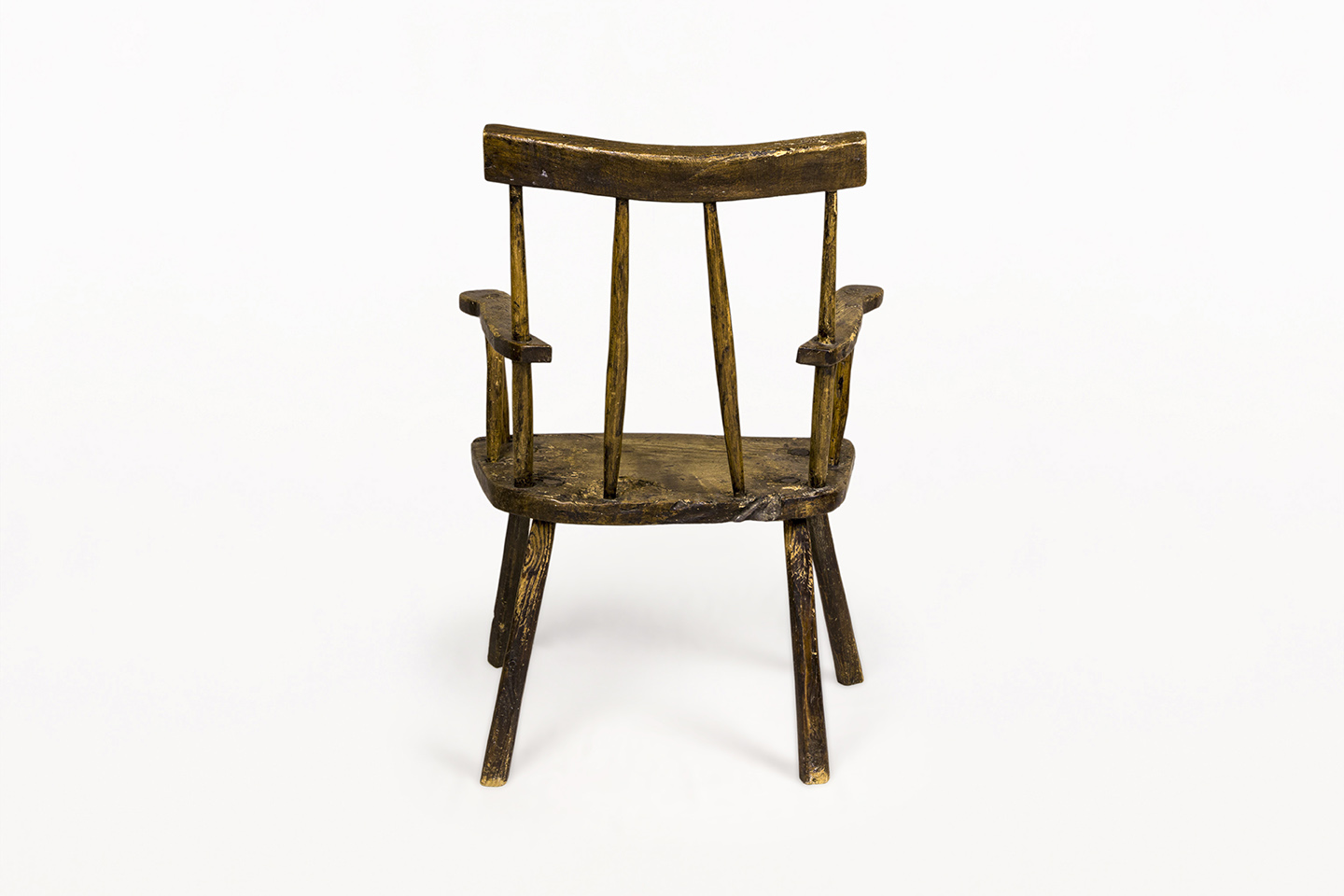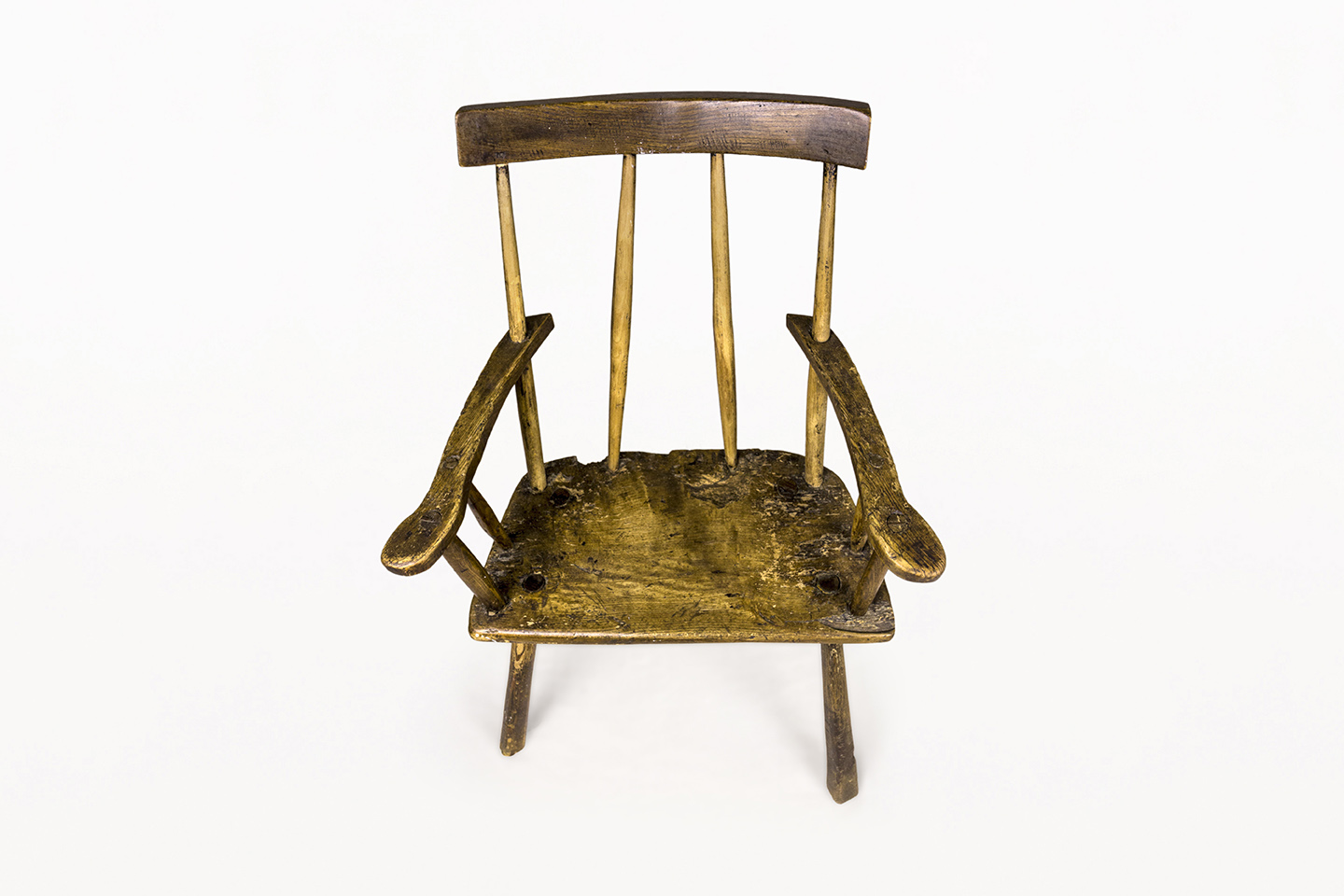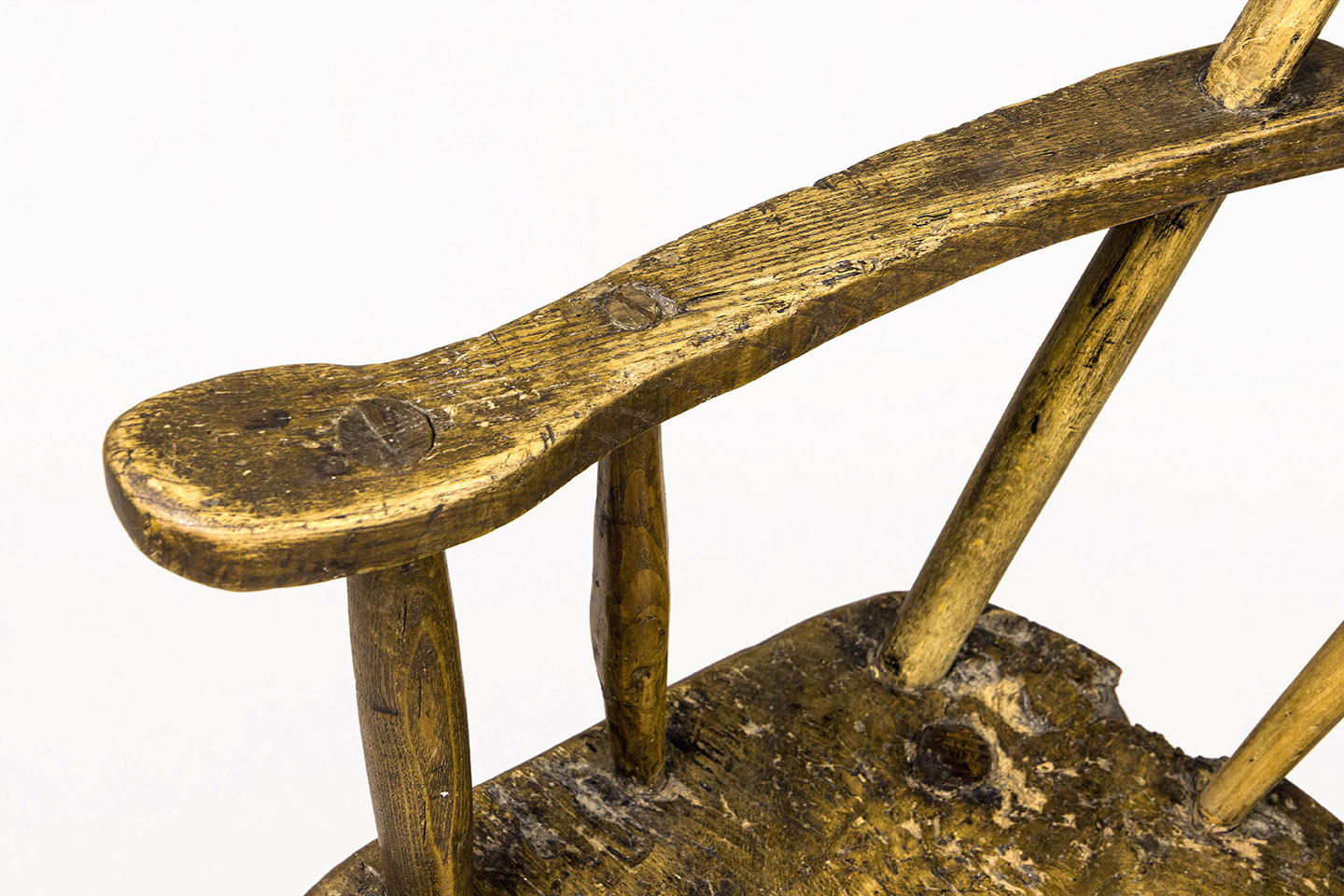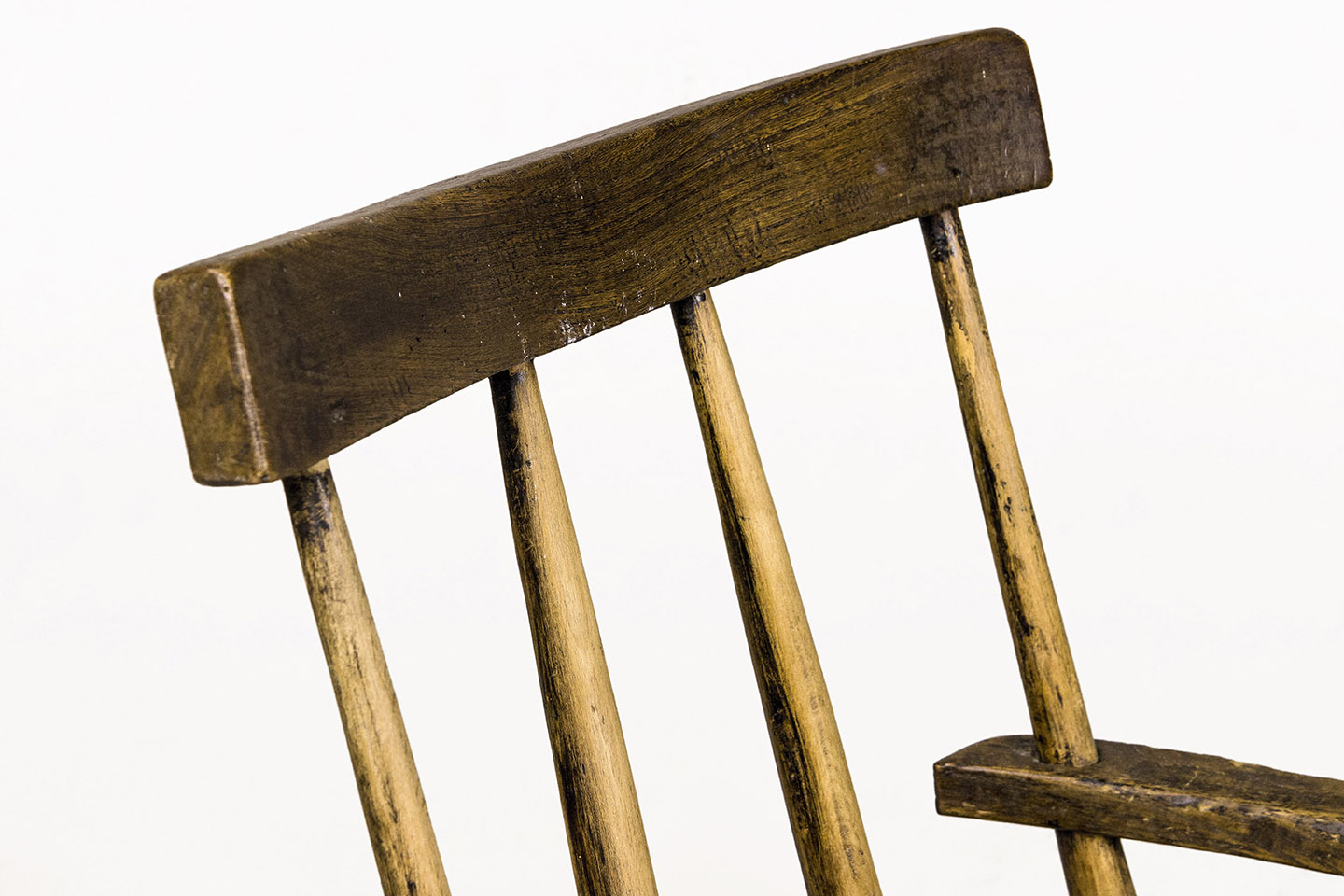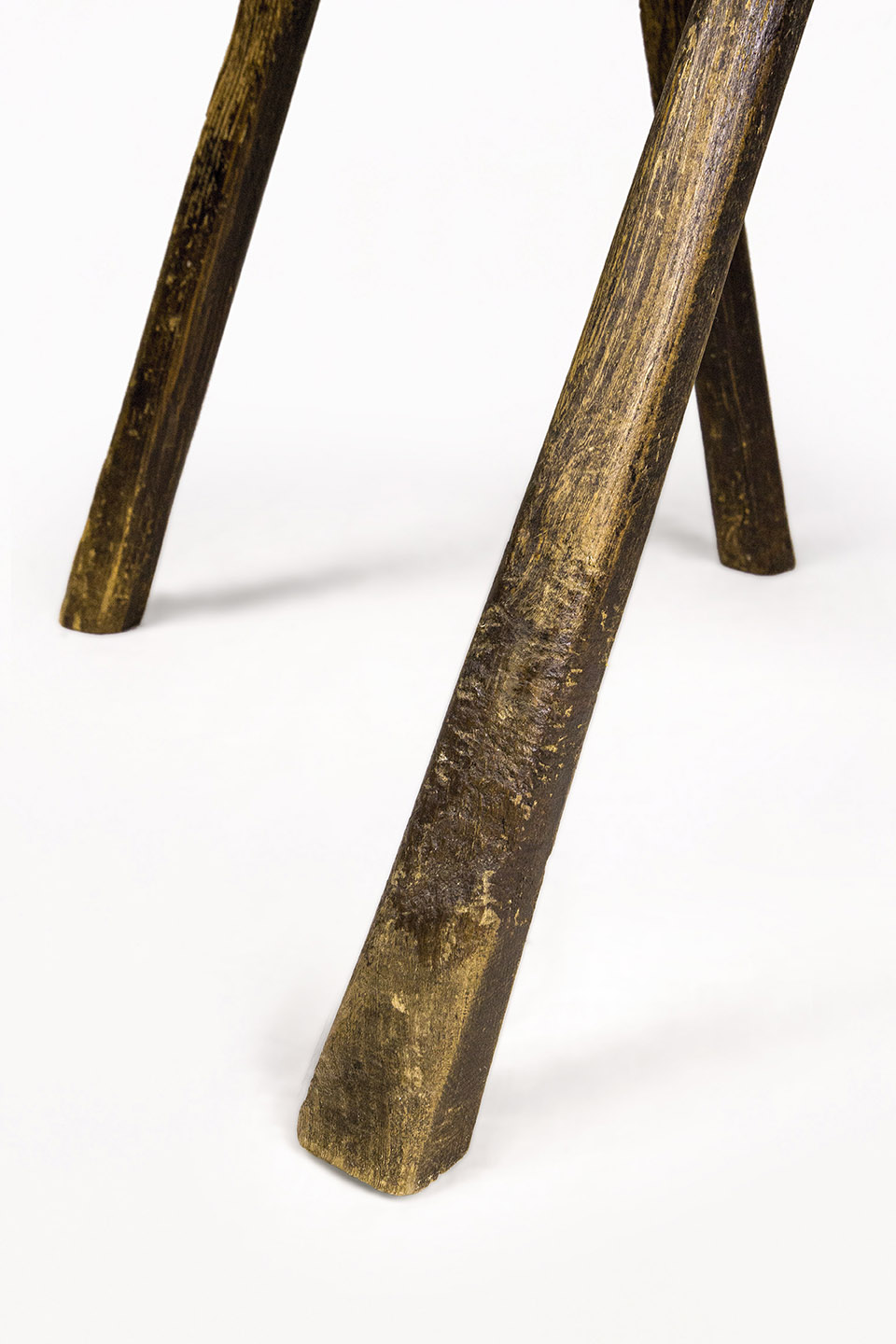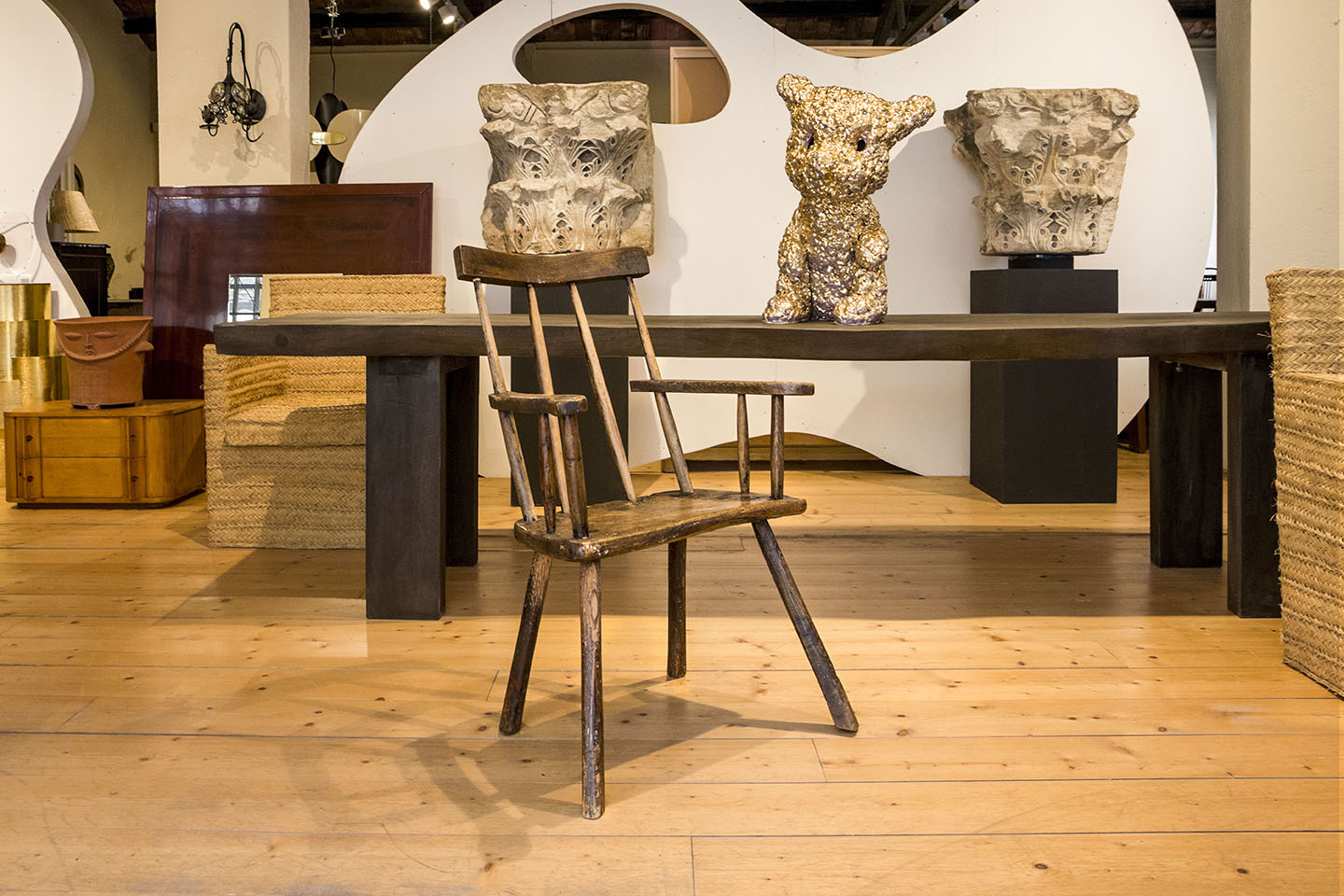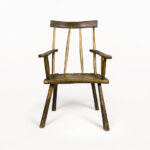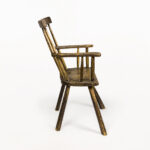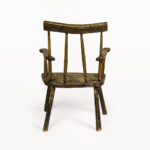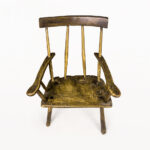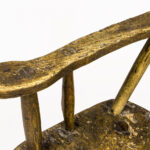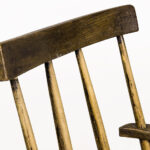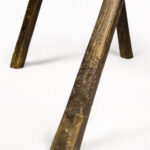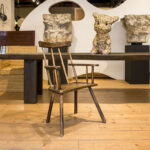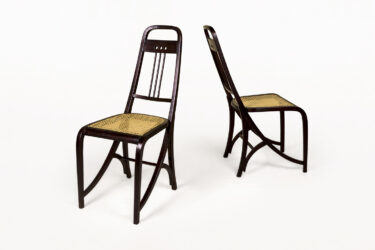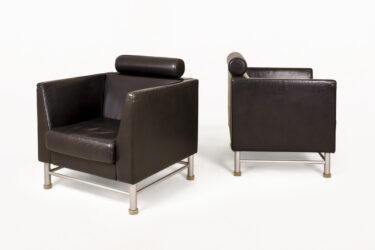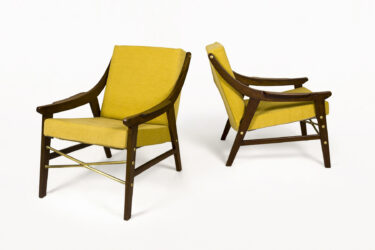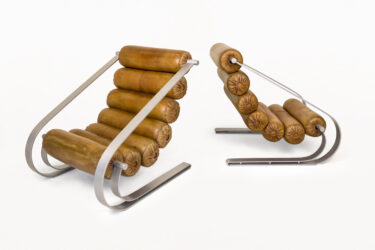Late 18th Century Irish Folk Art Armchair, Circa 1780, Ireland
DESCRIPTION: Late 18th Century Irish Folk Art Armchair, Circa 1780, Ireland.
Very decorative piece made with oak.
CONDITION: Good condition. Wear consistent with age and use.
DIMENSIONS: Height: 90cm (35.5in) Width: 65cm (25.5in) Depth: 46cm (18in) Seat Height: 44cm (17in)
ABOUT THE STYLE: The chair, as furniture, is probably the oldest of all types of furniture found in Ireland. One of the earliest types of seating found in any rural home was the ‘creepie’; a roughly made stool often consisting of a log raised off the floor. Throughout the Irish Country Furniture exhibition there are many styles of stools and chairs on display, including súgán (rope) chairs and straw armchairs. Other types of Irish chairs include the ladder-back kitchen chair, the country carpenter’s chair, the Windsor chair and various designs named after their localities, such as the Sligo and Leitrim chairs. The average rural home commonly had wooden furniture such as chairs, a dresser, a settlebed and perhaps storage furniture such as a mealbin and a food press in the kitchen or hearth area. A bed would also be built into the outshot of the house. Depending on the wealth of the household, there may also have been furniture such as a corner cupboard and a dowry chest (or bride’s box); a storage chest designed to hold linen, blankets and personal belongings. The Irish vernacular furniture tradition was heavily influenced by English and Welsh vernacular furniture, which was already well established, and there are many similarities between the furniture styles. Other influences include the styles of the furniture of wealthy houses, which were often adapted by local craftsmen for the country home. This can also be seen in the imitation of expensive grained woods with methods such as painting and ‘scumbling’, where a stain is applied on a light base coat, and drawn off with a graining comb. Regional variations in styles of furniture can also betray their influences. A heavy three-legged seat of oak and ash made in the mid-19th centry in Co. Mayo is displayed in the Irish Country Furniture gallery; it is a type of chair found only in Connaught and it has been suggested that it was introduced to the province by Scottish settlers. Also on display is an 18th century kitchen chair with a boarded seat and finely turned spindles from Co. Down; it is an unusual type of chair in Ireland and was probably influenced by English chairmaking design. A common feature of dressers from northern counties is their simple design and subdued decoration, possibly due to Scottish influence. However, one of the biggest influences on the design of Irish traditional furniture was the characteristics of the house itself; items, such as the outshot bed and built-in cupboards and dressers, were built specifically to suit the space it was to occupy, or designed to be multi-functional and therefore save space, such as the settlebed. The vernacular furniture tradition in Ireland developed much later than in England and Wales. The poverty and destruction brought by the wars of the 17th century meant that furniture was not common in rural Irish homes in this period. However, the late 18th & early 19th centuries saw an increase in the wealth of sections of the peasantry, which, along with an increase in the number of skilled craftsmen and the supply of cheap, imported pine, led to furniture becoming available to more of the rural population. Local carpenters, joiners and wheelwrights were the main makers of wooden furniture. In addition, many basketmakers made items of furniture such as chairs and child’s cradles using wicker rods until the early years of the twentieth century.

